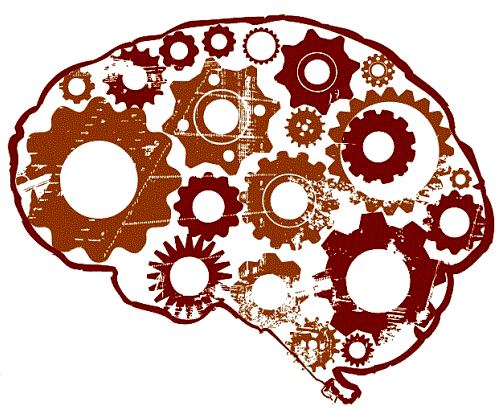Role of AI and machine learning in accelerating engineering and scientific research: A Deep Dive
In today’s rapidly evolving technological landscape, the integration of artificial intelligence (AI) and machine learning (ML) has significantly impacted the realm of engineering and scientific research. These cutting-edge technologies are revolutionizing the way researchers conduct experiments, analyze data, and derive insights in various domains. This blog post delves into the critical role of AI and ML in accelerating engineering and scientific research, along with practical insights, best practices, real-world applications, and future trends.
AI and machine learning play several key roles in expediting and enhancing engineering and scientific research processes:
- Data Analysis: AI algorithms can process massive datasets quickly, enabling researchers to extract meaningful patterns and insights efficiently.
- Predictive Modeling: ML models can predict outcomes based on historical data, facilitating decision-making and hypothesis testing.
- Automation: AI-powered systems can automate repetitive tasks, freeing up researchers’ time for more creative pursuits.
- Optimization: ML algorithms can optimize parameters and design spaces, leading to enhanced system performance and resource utilization.
The significance of AI and machine learning in engineering and scientific research is profound due to various factors:
- Efficiency: AI accelerates data analysis and computation, reducing research timelines and increasing productivity.
- Innovation: ML enables the discovery of hidden patterns and novel solutions, fostering innovation and breakthroughs.
- Precision: AI-driven models enhance accuracy and reliability in research outcomes, leading to robust conclusions.
- Competitive Edge: Organizations leveraging AI and ML gain a competitive advantage by staying ahead in research and development.
Implementing AI and machine learning in research involves several steps:
- Data Collection: Gather relevant and high-quality data for analysis.
- Data Preprocessing: Clean, normalize, and preprocess the data for model training.
- Model Selection: Choose appropriate ML algorithms based on the research objectives.
- Model Training: Train the selected model using the prepared data.
- Evaluation: Assess the model’s performance using metrics like accuracy, precision, and recall.
# Example code snippet for implementing a basic ML model in Python
from sklearn.model_selection import train_test_split
from sklearn.ensemble import RandomForestClassifier
X_train, X_test, y_train, y_test = train_test_split(X, y, test_size=0.2)
model = RandomForestClassifier()
model.fit(X_train, y_train)
- Data Quality: Ensure data integrity and quality for accurate model training and analysis.
- Model Interpretability: Strive for models that are interpretable and explainable to aid in decision-making.
- Computational Resources: Consider the computational requirements for training complex ML models.
- Ethical Considerations: Address issues related to bias, privacy, and fairness in AI applications.
Best practices for integrating AI and ML in research include:
- Domain Expertise: Collaborate with domain experts to ensure relevance and accuracy.
- Continuous Learning: Stay updated with the latest AI advancements and methodologies.
- Interdisciplinary Teams: Foster collaboration between data scientists, engineers, and researchers.
Common pitfalls to avoid:
- Overfitting: Ensure models generalize well to unseen data.
- Data Bias: Address biases in data collection and model training to prevent skewed outcomes.
- Lack of Documentation: Document processes and methodologies for reproducibility and transparency.
- Drug Discovery: AI accelerates drug discovery processes by analyzing molecular structures and predicting drug interactions.
- Climate Modeling: ML models help in climate prediction, extreme weather forecasting, and sustainability research.
- Robotics: AI is pivotal in autonomous robotics research for navigation, object recognition, and decision-making.
The future of AI and machine learning in engineering and scientific research holds exciting prospects:
- Explainable AI: Advancements in interpretable AI models for transparent decision-making.
- Automated Experimentation: AI-driven systems for designing and conducting experiments autonomously.
- Quantum Computing: Integration of AI and ML with quantum computing for complex research tasks.
In conclusion, the synergy between AI, machine learning, and engineering and scientific research is reshaping the landscape of innovation and discovery. By leveraging these technologies effectively, researchers can accelerate their work, uncover novel insights, and drive progress in diverse fields. Embracing AI and ML is not only crucial in staying competitive but also in advancing knowledge and pushing the boundaries of what is possible in research.
The use of AI and machine learning in engineering and scientific research holds immense potential for transforming traditional research methodologies and unlocking new frontiers of knowledge. To explore further resources on this topic, refer to the following links:
- TensorFlow Official Documentation
- Scikit-learn User Guide
- Towards Data Science - AI in Engineering
- IEEE Spectrum - Machine Learning
- Nature - Machine Learning in Scientific Research
Feel free to engage with us in the comments section below to share your thoughts, experiences, or questions on the role of AI and machine learning in accelerating engineering and scientific research. Let’s continue the conversation and explore the boundless opportunities created by these transformative technologies.
